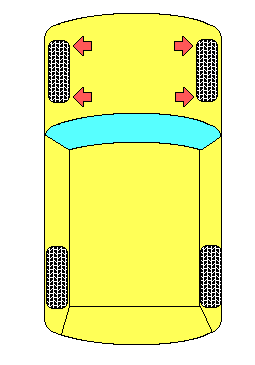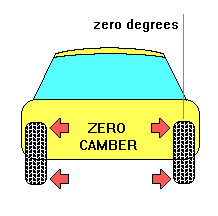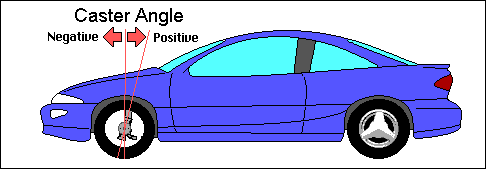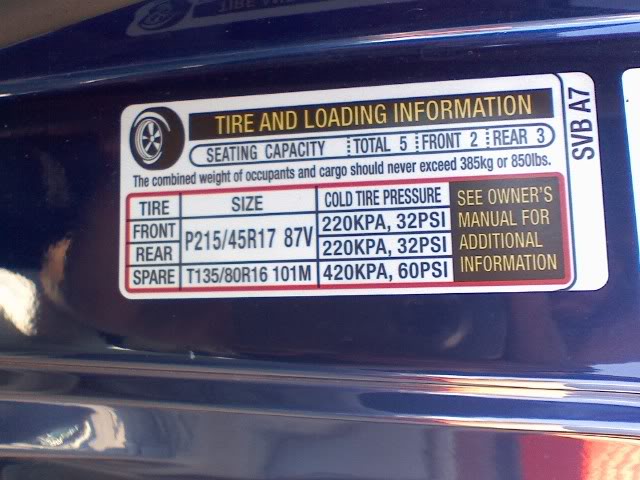tire help 101
#1
HOW TO READ YOUR TIRE
Tire Size Viewed On Sidewall
P215/45R17 87V M+S
-P = Type of tire
-215= width of the tire across the tread in millimeters
-45= Aspect ratio of the sidewall compared to the width
-R = Radial construction
-17= Diameter of the rim in inches
-87 = Tire's load rating
-V = Tire's speed rating
-M+S = Tire is suitable for all-season driving
Speed Ratings
M 81 mph (130 km/h)
N 87 mph (140km/h) Temporary Spare Tires
P 93 mph (150 km/h)
Q 99 mph (160 km/h) Studless & Studdable Winter Tires
R 106 mph (170 km/h) H.D. Light Truck Tires
S 112 mph (180 km/h) Family Sedans & Vans
T 118 mph (190 km/h) Family Sedans & Vans
U 124 mph (200 km/h)
H 130 mph (210 km/h) Sport Sedans & Coupes
V 149 mph (240 km/h) Sport Sedans, Coupes & Sports Cars
Alot of Tire Manufacters now adays DO NOT encourage downgrading the speed rating of your tires. This may result in poor handling and VERY unpredictable steering. If you want better cornering response, there is no problem installing a higher speed rated tire on your vehicle.
Understanding DOT's
How to read the serial number:
Example "DOT OB XO C60 2206"
DOT = US Dept. of Transportation
OB = Manuf. and Plant Code
XO - Tire Size and Code
C60 - Tire Manuf. Symbols and Keys
2206 = Production Date (ie: week/year, 22nd week of 2006)
Rotation
(6,000 - 7,000 Miles or Every Other Oil Change)
Tires need to rotate in more than one direction, rotating a vehicle's tires is essential to prevent uneven tire wear even MORE encourage if your dropped from OEM height. If left unserviced, unrotated tires will cause increased road noise due to "cupping", lower fuel economy, and decreased wet-weather traction. Additionally, badly neglected tires will have to be replaced ALOT sooner then if properly maintained.
Although typical rotation patterns consist of "Front > Back Rotation", It is now becoming generally accepted that on front-drive vehicles (like ours), you rotate the front tires to the rear in a straight line and cross the back tires to the front to inscrease traction and longevity of tires. In a rear-drive vehicle, you rotate the backs in a straight line to the front and cross the front tires to the back
Summary
All handling modifications and adjustments come down to improving the traction of the four tire patches on the road. Tires are actually their grippiest when there is about 5% slippage involved.
Driver smoothness is a major factor in the car's overall grip. All the fancy hardware in the world won't cure the loss of grip created by a jerky driver (and we don't mean personality).”
[align=center]ALIGNMENT TERMS[/align]
Toe

- Toe can be a very critical part in a wheel alignment because it has the greatest effect on tire wear. Toe refers to the parallelism between the wheels as viewed from the above view and is usually measured in inches or sometimes millimeters. When both front wheels are aimed straight ahead and the distance between the leading front edges of both front tires is exactly the same as the distance between the trailing edges, the wheels have "zero toe" and are "suppose to be" aligned. I "suppose to be" because toe alignment changes when the vehicle is being driven on a daily basis.
- Toe-in means the front edges of the tires are closer together than the rear edges
- Toe-out is when the front edges of the tires are farther apart than the rear edges. This may occur if the tie rod ends are worn, or if the control arm bushings have collapsed. Toe-out is a bad condition to have because it causes the tires to scrub as they roll along.
Camber

- Camber refers to the tilt of the wheels as viewed from the front or rear direct eye sight. Camber is the inward (negative) or outward (positive) tilt of the wheels. It is usually measured in degrees
- With zero camber (perfectly perpendicular to the road) will be the ideal alignment setting. But like toe, camber changes as the vehicle is being loaded and every time the vehicle goes over a bump or dip in the road. The up and down motions of the suspension change the specs of the control arms and struts, which causes camber to change on a regular basis.
Caster

- The third most important wheel alignment angle is caster, which is the forward (negative) or rearward (positive) tilt of the steering axis as viewed from the side. Caster is usually measured in degrees, and only applies to the front wheels because they are the only ones that steer (except for the few oddball Japanese cars that had four-wheel steering).
- Caster is a weird angle because it doesn't affect tire wear DIRECTLY first hand. It's greatest effect is on steering ability, steering effort and steering return when you recover from a turn. So it is often the most ignored measurement.
[align=center]AIR PRESSURE[/align]
Where To Find Tire Info

- This picture is the actual placard in your vehicle, it can be find inside the driver door jam one the right hand side once the door is open. Such information listed is the OEM Tire size, and proper air pressure
- How much air is the right amount to use? It depends on the application, the vehicle, the size of the tires and how much weight is on the tires. The simple answer is to follow the recommended inflation pressures specified by the vehicle manufacturer. The tire inflation specifications are generally listed in the owner's manual or on a decal in the glove box or door jamb.
- For many passenger cars and light trucks, the recommended OE tire pressure may range from 28 up to 34 psi. Recommended pressures for front and rear may also vary, and higher pressures may be recommended for towing or hauling loads.
- Also Keep in mind that recommended inflation pressure are for COLD tires. This means tires that have not been driven on for several hours (ideally overnight). It also means tires that are at a normal outside temperature of about 70 degrees F.
- To accurately inflate a tire, you have to compensate for changes in temperature. For every 10 degrees F change in ambient temperature, tire pressure will change a little more than half a pound.
Tire Size Viewed On Sidewall
P215/45R17 87V M+S
-P = Type of tire
-215= width of the tire across the tread in millimeters
-45= Aspect ratio of the sidewall compared to the width
-R = Radial construction
-17= Diameter of the rim in inches
-87 = Tire's load rating
-V = Tire's speed rating
-M+S = Tire is suitable for all-season driving
Speed Ratings
M 81 mph (130 km/h)
N 87 mph (140km/h) Temporary Spare Tires
P 93 mph (150 km/h)
Q 99 mph (160 km/h) Studless & Studdable Winter Tires
R 106 mph (170 km/h) H.D. Light Truck Tires
S 112 mph (180 km/h) Family Sedans & Vans
T 118 mph (190 km/h) Family Sedans & Vans
U 124 mph (200 km/h)
H 130 mph (210 km/h) Sport Sedans & Coupes
V 149 mph (240 km/h) Sport Sedans, Coupes & Sports Cars
Alot of Tire Manufacters now adays DO NOT encourage downgrading the speed rating of your tires. This may result in poor handling and VERY unpredictable steering. If you want better cornering response, there is no problem installing a higher speed rated tire on your vehicle.
Understanding DOT's
How to read the serial number:
Example "DOT OB XO C60 2206"
DOT = US Dept. of Transportation
OB = Manuf. and Plant Code
XO - Tire Size and Code
C60 - Tire Manuf. Symbols and Keys
2206 = Production Date (ie: week/year, 22nd week of 2006)
Rotation
(6,000 - 7,000 Miles or Every Other Oil Change)
Tires need to rotate in more than one direction, rotating a vehicle's tires is essential to prevent uneven tire wear even MORE encourage if your dropped from OEM height. If left unserviced, unrotated tires will cause increased road noise due to "cupping", lower fuel economy, and decreased wet-weather traction. Additionally, badly neglected tires will have to be replaced ALOT sooner then if properly maintained.

Although typical rotation patterns consist of "Front > Back Rotation", It is now becoming generally accepted that on front-drive vehicles (like ours), you rotate the front tires to the rear in a straight line and cross the back tires to the front to inscrease traction and longevity of tires. In a rear-drive vehicle, you rotate the backs in a straight line to the front and cross the front tires to the back
Summary
All handling modifications and adjustments come down to improving the traction of the four tire patches on the road. Tires are actually their grippiest when there is about 5% slippage involved.
Driver smoothness is a major factor in the car's overall grip. All the fancy hardware in the world won't cure the loss of grip created by a jerky driver (and we don't mean personality).”
[align=center]ALIGNMENT TERMS[/align]
Toe

- Toe can be a very critical part in a wheel alignment because it has the greatest effect on tire wear. Toe refers to the parallelism between the wheels as viewed from the above view and is usually measured in inches or sometimes millimeters. When both front wheels are aimed straight ahead and the distance between the leading front edges of both front tires is exactly the same as the distance between the trailing edges, the wheels have "zero toe" and are "suppose to be" aligned. I "suppose to be" because toe alignment changes when the vehicle is being driven on a daily basis.
- Toe-in means the front edges of the tires are closer together than the rear edges
- Toe-out is when the front edges of the tires are farther apart than the rear edges. This may occur if the tie rod ends are worn, or if the control arm bushings have collapsed. Toe-out is a bad condition to have because it causes the tires to scrub as they roll along.
Camber

- Camber refers to the tilt of the wheels as viewed from the front or rear direct eye sight. Camber is the inward (negative) or outward (positive) tilt of the wheels. It is usually measured in degrees
- With zero camber (perfectly perpendicular to the road) will be the ideal alignment setting. But like toe, camber changes as the vehicle is being loaded and every time the vehicle goes over a bump or dip in the road. The up and down motions of the suspension change the specs of the control arms and struts, which causes camber to change on a regular basis.
Caster

- The third most important wheel alignment angle is caster, which is the forward (negative) or rearward (positive) tilt of the steering axis as viewed from the side. Caster is usually measured in degrees, and only applies to the front wheels because they are the only ones that steer (except for the few oddball Japanese cars that had four-wheel steering).
- Caster is a weird angle because it doesn't affect tire wear DIRECTLY first hand. It's greatest effect is on steering ability, steering effort and steering return when you recover from a turn. So it is often the most ignored measurement.
[align=center]AIR PRESSURE[/align]
Where To Find Tire Info

- This picture is the actual placard in your vehicle, it can be find inside the driver door jam one the right hand side once the door is open. Such information listed is the OEM Tire size, and proper air pressure
- How much air is the right amount to use? It depends on the application, the vehicle, the size of the tires and how much weight is on the tires. The simple answer is to follow the recommended inflation pressures specified by the vehicle manufacturer. The tire inflation specifications are generally listed in the owner's manual or on a decal in the glove box or door jamb.
- For many passenger cars and light trucks, the recommended OE tire pressure may range from 28 up to 34 psi. Recommended pressures for front and rear may also vary, and higher pressures may be recommended for towing or hauling loads.
- Also Keep in mind that recommended inflation pressure are for COLD tires. This means tires that have not been driven on for several hours (ideally overnight). It also means tires that are at a normal outside temperature of about 70 degrees F.
- To accurately inflate a tire, you have to compensate for changes in temperature. For every 10 degrees F change in ambient temperature, tire pressure will change a little more than half a pound.
#2
Quick question, I'm not good at this, my 98 civic stock tire size is 185 65 R14. I bought some Konig rims and tires, size 195 60 R15. They are slightly taller than stock and has lifted the car just noticably. What tire size would I need (in a 15 inch) to match the height of the original tires & bring the car lower to where it was?
#5
Not sure if this is the place to post this or not so I apologize ahead of time.
With our ruff winters here in New England I am looking to put some good winter tires with some steel rims to save some wear on my "summer's", I have found a good deal on some used winters with rims, my only concern is the size is slightly different.
2007 Civic LX sedan
Currently running stock: 205/55-16
Looking to put winters: 205/60-16
Again, they will have their own set of rims, just looking for advice on the height difference.
ANY advice / help would be GREATLY appreciated.
C
With our ruff winters here in New England I am looking to put some good winter tires with some steel rims to save some wear on my "summer's", I have found a good deal on some used winters with rims, my only concern is the size is slightly different.
2007 Civic LX sedan
Currently running stock: 205/55-16
Looking to put winters: 205/60-16
Again, they will have their own set of rims, just looking for advice on the height difference.
ANY advice / help would be GREATLY appreciated.
C
#6
Not sure if this is the place to post this or not so I apologize ahead of time.
With our ruff winters here in New England I am looking to put some good winter tires with some steel rims to save some wear on my "summer's", I have found a good deal on some used winters with rims, my only concern is the size is slightly different.
2007 Civic LX sedan
Currently running stock: 205/55-16
Looking to put winters: 205/60-16
Again, they will have their own set of rims, just looking for advice on the height difference.
ANY advice / help would be GREATLY appreciated.
C
With our ruff winters here in New England I am looking to put some good winter tires with some steel rims to save some wear on my "summer's", I have found a good deal on some used winters with rims, my only concern is the size is slightly different.
2007 Civic LX sedan
Currently running stock: 205/55-16
Looking to put winters: 205/60-16
Again, they will have their own set of rims, just looking for advice on the height difference.
ANY advice / help would be GREATLY appreciated.
C
Thread
Thread Starter
Forum
Replies
Last Post
mill$civic
General Civic Talk
6
09-27-2005 01:06 PM



